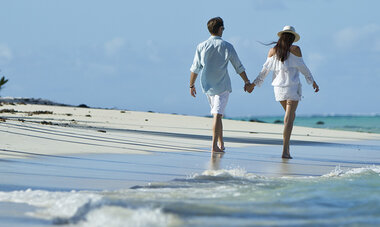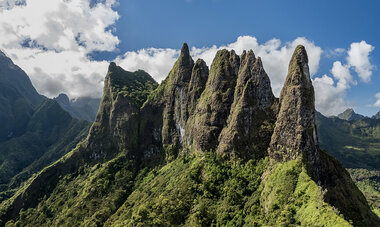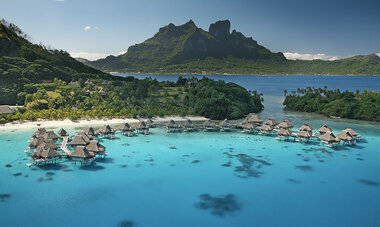
Best things to do in Tahiti
You have decided to travel to Tahiti? This is a great idea! Your trip to the largest island of French Polynesia is going to be wonderful. The Island offers many sites to visit and many traditions to discover. The question may rather be… « what will you have time to do in Tahiti? ».
You may prefer shopping than a restaurant, a beach rather than a hike, or a museum rather than surfing… Before your arrival in Tahiti, we thought we would give you a full tour of the Island. This should provide tips and activity ideas to organize your stay.
If your dates match the schedule of the Tere Faa’ati ia Tahiti Nui, Big Island* tour you should join its traditional « trucks » (used to be the local buses). The atmosphere of these annual tours is cheerful and exciting, with local music and songs, beautiful flowers, gourmet food tastings and friendly people.
Tahiti has a lot to offer. With or without a guide, you can explore the mountains and lush gardens of French Polynesia, see waterfalls (like Faarumai), explore the Pacific Ocean, discover beautiful white sand beaches, but also wonderful black sand... Not to mention the traditional downtown tour of Papeete, with the Papeete market, food and stores. There are so many things to do!
Follow the guide, and let yourself be carried away by the soul of Tahiti and French Polynesia.
*Nui, big, in opposition to Iti, small, Tahiti iti being the Peninsula (Presqu’île)
A tour worth doing : travel around Tahiti
One of the first things to do when you are in Tahiti, or even in any island of French Polynesia, is to ride by car, scooter or bicycle around the island. It’s a beautiful adventure, and the perfect opportunity to explore the island and locate all the most beautiful black or white sand beaches, as well as other places of interest such as the Botanical Gardens, the restaurants with the best food, the hikes that lead to a wonderful waterfall...
The road around Tahiti is 75 miles, to which you’ll add about 18 miles going through the peninsula (Tahiti’s “presqu’île”). In other words, it takes about 3 hours of your morning, if you only stop to buy fruits. But worthwhile stops are all around the Island: Papeete city, museums, parks, hike trails, beaches, and all the things you can imagine in a beautiful tropical island. Here are all the things to do, see and explore during your tour of Tahiti.
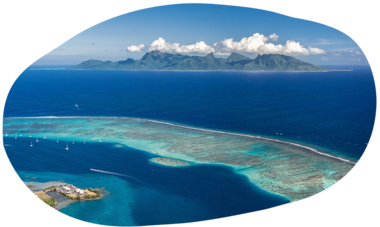
Travel from North to South
Starting from your landing place, Tahiti International Faa’a Airport is located between the lagoon and the nearby mountain, just 10 minutes away from Papeete, the capital of French Polynesia.
Faa’a’s district, located North-West of the Island, is bathed by intense and mystical sunsets colors over Moorea. Ancestral religious beliefs explain that spirits of the deceased fly to the sacred Island of Raiatea, from Tata’a point, located next to the Intercontinental hotel. In the water we can observe traces of the Pa’i warrior, who stopped Moorea from being stolen.
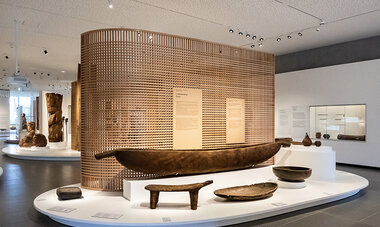
The West coast of Tahiti and its beaches
Punaauia is the most inhabited urban area in French Polynesia. Its shores follow fifteen kilometers of crystal-clear lagoon. The public beach of Vaiava PK18 (18 km from Papeete), is a must. There, you can go snorkeling and explore the beautiful underwater world of Tahiti.
If you’d rather go for mountain hikes, with stunning views over Tahiti, the Pacific ocean, and Moorea, the Mount Marau’s ascent starting in Miri’s valley is a beautiful hike to do during your trip in French Polynesia.
Hundreds of orange trees were planted throughout Punaauia’s valleys and hills in the 1900’s. Every year in July, we celebrate with an athletic and gourmet party the harvest of the fruits.
You should definitely stop at the « Museum of Tahiti and its Islands », located on “Pointe des Pêcheurs”. It’s here that the Fei Pi battle took place in 1816, during which the Pomare II army, who had just converted to Christianity, prevailed over pagan troops.
The museum, entirely renovated, offers essential elements to better understand Polynesian history and heritage.
When you get to Paea, take the small road going to the Arahurahu marae. Renovated 70 years ago, it gives a powerful testimony of ancient Polynesian cultural centers, just like the marae of 'Ōpūnohu in Moorea or Taputapuātea in Raiatea, the latter being inscribed on the UNESCO World Heritage List .

The great coastal plain of Tahiti
Starting in Paea, and more specially in Papara, you are entering what Tahitian people call the districts, as opposed to the urban area that goes from Mahina in the South to Punaauia. The rural area is made of traditional, quiet, family oriented, and agricultural districts. On the old Atimaono plantation, a beautiful golf range was established in 1970, that is greatly enjoyed by the Tahitian population.
Further South, you won’t be able to miss the Mara’a caves. These naturally carved rocks retain clear and fresh water through infiltration. Its ceiling is covered with tropical ferns. Out of the three, the largest cave’s optical illusion is captivating.
Before leaving Papara, you’ll pass by the black sand beach and surfing spot of Taharu’u : if you want to, you can bring some food to picnic on the beach.
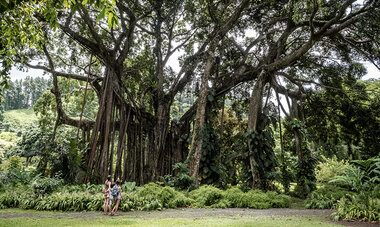
Rural and traditional Tahiti
Papeari and Mataiea are part of the Teva i Uta community (Teva coming from the mountain, as opposed to Teva i Tai coming from the ocean). It used to be the kingdom of the most powerful leaders of Tahiti. The Queen Pureia welcomed Wallis in 1767.
This community shelters three amazing cultural sites : the Vaipahi water gardens, offering a beautiful walk ; the Gauguin Museum where the famous artist’s reproductions were displayed until 2013, and which is under full rehabilitation to reveal the Paul Gauguin dedicated scenic space in 2024 ; and finally the botanical gardens, created 100 years ago by the American Harrison Smith, lover of tropical plants that he brought from all over the world and gathered here.
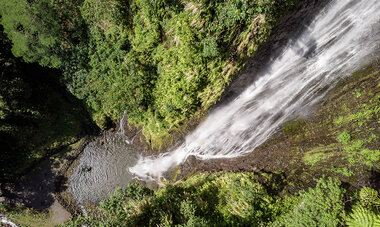
The coast of the waterfalls
From the road, you’ll see the Peninsula’s vertical foothills overlooked by roundish hills. Maeva i Tahiti Iti, welcome to the « Little Tahiti ».
The Peninsula became famous because of its mystical wave, Teahupo’o, well known around the world, where the 2024 Paris Olympic Games took place. In the South or on the plateau, there are some amazing hikes around here.
Te Pari is an untouched place, with lush vegetation : book tours with a guide to explore these natural gardens, preserved from human constructions.
You will also find a pearl farm here. Tahitian pearls are renowned throughout the world. Mainly cultivated in the Tuamotu Archipelago and the Gambier Islands, these treasures of the sea are harvested using a precise technique that you can discover when visiting some of the pearl farms open to the public. In the Society Archipelago, you can find them in Taha'a, Tahiti, or Raiatea, for example.
After a quick visit of Taravao, the Peninsula’s main town developing every year a little bit more, you will go towards the East Coast. Sparsely populated, windy, without a lagoon, it is the wild coast. It is also the coast of the waterfalls, with many beautiful hikes: Vaihi in Faaone, or Pape’ana’ana in Hitia’a’o’te rã (meaning the rising sun), a community where the Bougainville ship accosted in 1768 and met with the ancestral leaders.
This is also where you can enjoy an amazing geological wonder: Tahiti's lava tubes, which can be explored on a hike or canyoning trip. These rock tunnels, formed by lava flows that once poured from ancient volcanoes, are a must-see for all athletic travelers and adventurers! Here you can admire waterfalls and the magnificent wilderness of the inner island.
Further North, the « Trou du Souffleur » of ‘Arahoho (meaning the howling road) is a natural wonder with the ocean rushing under the road, growling, and spitting like a dragon. It is located near the beautiful Faarumai waterfall. Do not hesitate to go there during your trip. It's a perfect view of the inland of French Polynesia islands, without even needing to hike, and without the need for a guide!
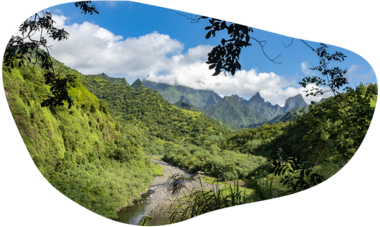
The big valley
On the North tip of the Island, the Papeno’o valley is one of the most beautiful historical sites of Tahiti. Here, the waves offer a magical surfing spot. Papeno’o is above all, the name of the valley that goes all the way to the Tahiti caldera. It is also where one of the islands’ s largest hydroelectric dams was built.
Past Papeno’o, the urban area gets closer. Your adventure takes you to Mahina, recognizable by its lighthouse, the Pointe Vénus is home to one of the most beautiful black sand beaches of the island.
On his first expedition, the well known Captain Cook settled here and met the High Priest Tupaia, his name is also one of Air Tahiti Nui’s planes. Tupaia shared his knowledge of the Great Ocean and the constellations with the crew, and sailed with them up to Aotearoa (to become the future New-Zealand).

Urban zone
Before going down to Arue, a stop at the Tahara’s viewpoint will offer you an amazing panorama of the East coast and Moorea.
From here, the coastline becomes less visible, due to a concentrated habitat. I recommend focusing your attention on the mountain side.
First with the James Norman Hall Museum. The name might mean nothing to you, however you probably heard about it as he wrote « Mutiny on the Bounty », novel based on 1792 historical facts.
Still on the mountain side, the very intimate and unique town hall of Arue, previously named “Saintonge domain”, is a marvel of colonial-style constructions.
Before reaching Pirae, while the coastal shore is getting larger, Arue’s yacht club is a pleasant place equipped with many facilities like restaurants, va’a, fishing docks and marina.
Pirae’s community stands out because of the architecture of its townhall and its surprisingly heavy columns. It is a referral point that marks the Hamuta valley’s entering point. It is the access to a hiking trail (subject to fees) to Pare (old district), place of historical importance leading to the Belvedere Road and the Aorai, third on the list of the highest Tahiti Mountain tops (it is 2066 meters high. The highest being Mount Orehena and its 2241 meters).
All around the island, the coast offers numerous starting points for excursions and aquatic activities to enjoy the Polynesian waters. For example, you can go surfing or book a boat trip. Looking for a unique activity ? Learn more about Polynesian culture by discovering traditional sailing in a sailing canoe, for an exceptional immersion in the history of the Polynesian people.
Welcome to Papeete, the capital town of Tahiti
Administrative, political, and economic center of French Polynesia, Papeete city is home to many buildings like the Presidents House, the Assembly, the higher representative of France’s house, etc.
Papeete is a charming town, focusing on its ocean front along the Pomare IV Queen’s Boulevard. You’ll find something pleasant in this area going:
- South-west, from the Robert Wan Pearl Museum, reached after a walk along the lagoon and through the Paofai Gardens
- North-East, you will find the passenger terminal, where the ferries operate daily return trips to Moorea, and some weekends trips to the Society Islands
- Between these two locations, you can find the Tahiti Tourism office, the city town hall, the local market, the Cathedral of Papeete, all essential landmarks from the Assembly to the parks, as well as restaurants, bars, shops, banks, post offices…
The Papeete market is one of the must-see places in Tahiti. You will find all the local food, products made in all the islands of French Polynesia, handicraft items, black pearls, pareos, and many souvenir stores to bring back the best gifts from your trip. it is also the most important market in French Polynesia, so don't forget to add it to your list of things to do in Tahiti !
Back to Faa’a airport near Papeete, where you can take a flight to travel to other destinations such as Bora Bora, Rangiroa or the Marquesas islands. Quite an unexpected island tour, isn’t it?
You’ll feel the same about all our archipelagoes. Imagine an ocean populated with 118 islands, dispersed on about 1,76 million square miles of the largest ocean on Earth… what an adventure !
Looking for an experience that suits you best for your next polynesian adventure? Follow these links:
